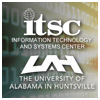Solutions for Mining Distributed Scientific Data
| Title | Solutions for Mining Distributed Scientific Data |
| Publication Type | Conference Proceedings |
| Year of Publication | 2007 |
| Authors | Lynnes, C, Pham, L, Graves, S, Ramachandran, R, Maskey, M, Keiser, K |
| Conference Name | AGU 2007 Fall Meeting |
| Date Published | 12/2007 |
| Conference Location | San Francisco, CA |
| Abstract | B: Researchers at the University of Alabama in Huntsville (UAH) and the Goddard Earth Sciences Data and Information Services Center (GES DISC) are working on approaches and methodologies facilitating the analysis of large amounts of distributed scientific data. Despite the existence of full-featured analysis tools, such as the Algorithm Development and Mining (ADaM) toolkit from UAH, and data repositories, such as the GES DISC, that provide online access to large amounts of data, there remain obstacles to getting the analysis tools and the data together in a workable environment. Does one bring the data to the tools or deploy the tools close to the data? The large size of many current Earth science datasets incurs significant overhead in network transfer for analysis workflows, even with the advanced networking capabilities that are available between many educational and government facilities. The UAH and GES DISC team are developing a capability to define analysis workflows using distributed services and online data resources. We are developing two solutions for this problem that address different analysis scenarios. The first is a Data Center Deployment of the analysis services for large data selections, orchestrated by a remotely defined analysis workflow. The second is a Data Mining Center approach of providing a cohesive analysis solution for smaller subsets of data. The two approaches can be complementary and thus provide flexibility for researchers to exploit the best solution for their data requirements. The Data Center Deployment of the analysis services has been implemented by deploying ADaM web services at the GES DISC so they can access the data directly, without the need of network transfers. Using the Mining Workflow Composer, a user can define an analysis workflow that is then submitted through a Web Services interface to the GES DISC for execution by a processing engine. The workflow definition is composed, maintained and executed at a distributed location, but most of the actual services comprising the workflow are available local to the GES DISC data repository. Additional refinements will ultimately provide a package that is easily implemented and configured at additional data centers for analysis of additional science data sets. Enhancements to the ADaM toolkit allow the staging of distributed data wherever the services are deployed, to support a Data Mining Center that can provide additional computational resources, large storage of output, easier addition and updates to available services, and access to data from multiple repositories. The Data Mining Center case provides researchers more flexibility to quickly try different workflow configurations and refine the process, using smaller amounts of data that may likely be transferred from distributed online repositories. This environment is sufficient for some analyses, but can also be used as an initial sandbox to test and refine a solution before staging the execution at a Data Center Deployment. Detection of airborne dust both over water and land in MODIS imagery using mining services for both solutions will be presented. The dust detection is just one possible example of the mining and analysis capabilities the proposed mining services solutions will provide to the science community. More information about the available services and the current status of this project is available at http://www.itsc.uah.edu/mws/ |
- Log in to post comments
- Google Scholar




